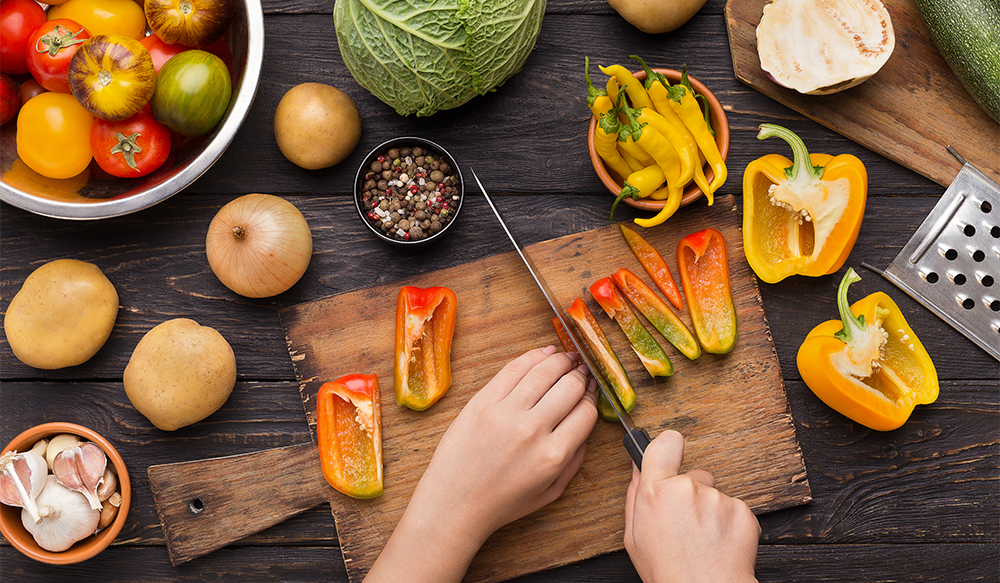
Let’s face it: Food waste is a massive problem around the world. But just how much food gets tossed, and what can we do about it? Today, we’ll explore food waste in America and discuss some of the small steps that each of us can take to reduce food waste at home.
Food Waste Basics
It’s estimated that 80 billion pounds of food is wasted in the United States each year. It’s also believed that half of all seafood is thrown out in America, in addition to 48 percent of all fruits and vegetables. With that much food waste, it’s no surprise that food is the No. 1 thing in America’s landfills.
Actions throughout the entire food supply chain lead to food waste—from retailers and service providers to consumers themselves. The primary ways that food gets wasted are:
- Imperfect produce being removed from the supply chain
- Food that’s approaching, at, or beyond the date specified on its label being thrown out by both retailers and consumers
- Leftover or unused food that’s still perfectly edible being discarded from household kitchens and restaurants
8 Ways to Reduce Food Waste
Food waste is an issue that each of us can do our part to improve. Here are eight ways you can help:
1. Buy “ugly” produce
One way you can reduce food waste is by purposely picking out those imperfect-looking yet still delicious and nutritious fruits and veggies at the grocery store.
There are also several services that offer inexpensive “ugly” produce, including:
Another way to purchase imperfect-looking produce is to participate in a community-supported agriculture (CSA) program—which is also a nice way to support local agriculture. CSA boxes are full of locally grown whole foods that often will challenge traditional ideas of what produce “should” look like.
2. Shop more frequently
It may be beneficial for you to rethink the way that you shop by popping into the grocery store more often. Planning for only a few days at a time could help you home in on exactly what you need for specific meals.
Grocery delivery services make shopping more frequently an easier task for busy customers. Here are seven options to choose from:
- FreshDirect
- Instacart
- Shipt
- Peapod
- Postmates
- DoorDash
- Amazon Prime
3. Use a meal kit delivery service
Speaking of delivery services, another way to reduce food waste in your household is to use a meal planning service that sends you the precise amount of ingredients that you need to make your meals. From vegan smoothies to steak dinners, there’s something out there for everyone. Some popular brands include:
- Green Chef
- Daily Harvest
- HelloFresh
- Blue Apron
- SmoothieBox
4. Grow your own produce and herbs
Another way you can reduce food waste is by growing your own fruits, veggies, and herbs. Gardening not only gives us a deeper connection to our food, but it also gives us the ability to use as needed. For instance, gardeners can pick off a small amount of fresh herbs from a basil plant for a soup recipe, instead of buying a whole package of basil that may be used only once.
Looking to get started with your own garden? Check out our tips for growing your own fresh produce.
5. Store food correctly to prolong freshness
Ensure that you’re storing your food properly to keep it fresh longer. One way to be in the know on best practices is to consult with a food storage app, such as the USDA FoodKeeper app, for recommendations on storing your food items.
Here are a few handy storage tips to keep in mind:
- Keep meat on the lowest shelf of the refrigerator. This way, if it leaks, it won’t drip down and potentially contaminate other foods in your fridge.
- Although most produce stores best in the refrigerator, there are certain fruits and veggies that are best kept at room temperature. Keep tomatoes and avocados on the counter, for example, and onions and potatoes stay fresh the longest in a cool, dark place.
- Store high-water cheeses, such as mozzarella, in water in a plastic container to maximize freshness.
6. Keep your fridge tidy
It’s nice to keep your kitchen stocked, but an overly packed fridge may be detrimental to your food waste reduction efforts. Make an effort to keep your fridge organized so that you can see all of your food, and use the first-in, first-out (FIFO) method. There are a number of tools out there, such as the NoWaste app, that help users easily track, organize, and manage the food in their homes.
7. Get a clear understanding of label terminology
Research shows that confusing labels contribute to our food waste problem. Get a better grasp on label terminology to ensure that you aren’t throwing perfectly good food into the trash. Check out a few of our food dating resources for more information:
- Feeding Westchester’s Food Dating Guide
- “Food Education: What the Dates on Your Food Really Mean”
- “Why You Shouldn’t Live by the Term ‘Expiration Date’”
8. Plan ahead to buy only what you need
Shop smart by making a list of all the food items that you need ahead of time. Planning your meals out and knowing what you need helps reduce mindless spending and impulse purchases.
Furthermore, make a conscious effort to resist buying items in bulk that you’re not confident will be used in a timely manner.
If we all were to get involved and make an effort to throw out less food in our own households, there would be a dramatic reduction in the amount of food wasted across America. Decreasing food waste in your household will not only reduce your carbon footprint and be beneficial to the environment, but it will also save you money.







